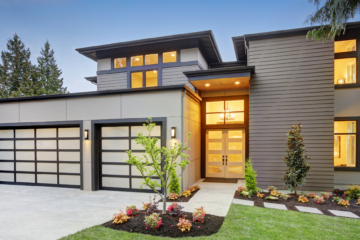Home Features That Matter Most: When choosing to buy a home, you’re buying more than just a house. You’re buying:
- Location – access to the neighborhood’s amenities.
- Condition – the building quality, style, repair of your home.
- Affordability – owning a home that functions for the size and needs of your household more affordably than you can rent.

A Back-to-Basics Economy
In 2012, bigger wasn’t better, and over-the-top home features were undervalued in the new back-to-basics economy. Today’s homebuyer is “very focused on affordability”, says John Burns Real Estate Consulting. Consumers prefer smaller homes and are less willing to pay for extravagant features such as outdoor kitchens and media rooms.
High-end home sales over $500K have dropped by more than half since 2007, from 13% to 6% of all new home sales, while homes under $200K rose from 33% to 42% of all transactions. Homes under $300K account for 75% of all new homes built today. Homebuyer preferences are growing for single-story homes with greater accessibility for older people and flexible floor plans that allow aging parents or boomerang kids to have a second master suite.
Most Wanted Features
According to a recent study, nearly three quarters of home buyers look for homes that are energy efficient and use sustainable materials.
The most desirable home features include:
- Green/energy efficient
- Building a custom home
- Water views
- Mountain views
- Suburban home
- Near the beach
- Cottage in the woods
How Important Is Square Footage?
MLSs use it. Insurers use it. Appraisers use it. Tax Assessors use it. When it comes to real estate, there’s no avoiding square footage as a measure of a home’s value. But how much is square footage worth to you as a homebuyer? Knowing the square footage can be helpful, but it shouldn’t be the main tool to determine your offer price. Square footage measurements aren’t exact, nor are they taken the same way by every person.
For example, your local tax assessor or appraiser may determine square footage by measuring the outside of the house. A real estate professional, on the other hand, typically counts only indoor living space to determine square footage. Real estate listings for single-family homes do not include square footage for covered “outdoor” spaces, including porches, verandas, balconies and porte-cocheres. Yet, in high-rise buildings, square footage quotes often include balconies. Further, some elements such as stairways and closet spaces are also open to interpretation. If you’re buying a home with a two-story foyer, is that foyer space also counted on the second floor?
Another subjective measure is the price per square foot, this is determined by the number of square feet divided into the price of the home. High-end homes with expensive materials such as granite countertops and finishes such as hardwood floors tend to have a much higher price per square foot than more affordable homes. But what if those high-end features are 20 years old, and you’re comparing them to other similar homes in the area that are brand new? Hallways, landings and stairs can add hundreds of square feet to any home, but is that space really livable? An open floor plan may have smaller square footage, but be much more pleasant to live than a larger home with too much space allocated to getting from one room to another.
All this means that valuations based on square footage are and should be somewhat subjective. If you’re confused about what you are paying per square foot for your next home, ask your real estate professional for interpretation.


